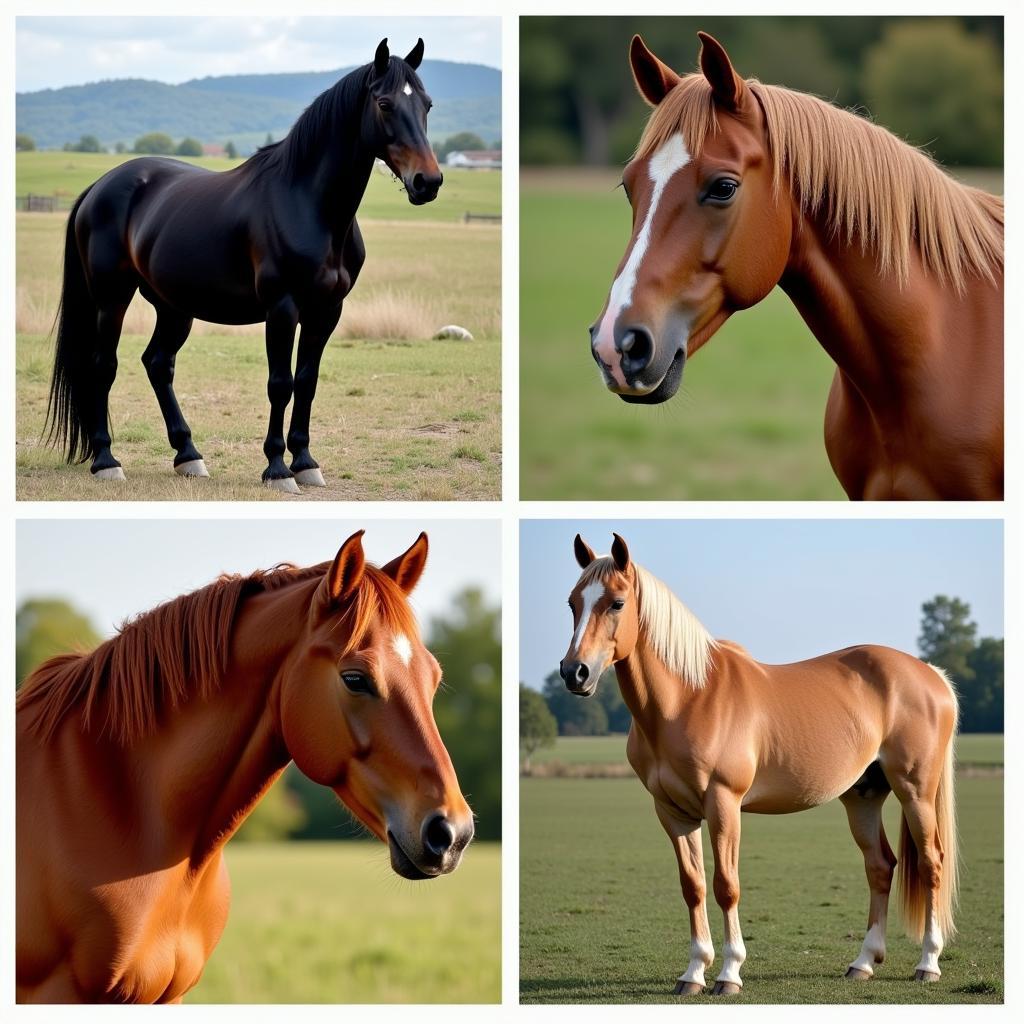Understanding Horse Hair Color
October 22, 2024Horse Hair Color is incredibly diverse, ranging from the deepest black to the purest white and every shade in between. This fascinating aspect of horses is determined by their genetics, which dictate the production and distribution of pigment in their hair follicles. Understanding the basics of horse hair color genetics can deepen your appreciation for these magnificent animals.
The Role of Genetics in Horse Hair Color
Just like in humans, horse hair color is determined by the genes they inherit from their parents. These genes control the production of melanin, the pigment that gives hair its color. There are two main types of melanin: eumelanin, which produces black and brown pigments, and pheomelanin, which produces red and yellow pigments.
Different combinations of these pigments, along with their distribution within the hair shaft, create the vast array of horse hair colors we see today.
Basic Horse Hair Colors and Their Genetic Basis
Let’s delve into some of the most common horse hair colors and the genetic factors behind them:
- Black: Black horses have genes that result in the production of predominantly eumelanin, giving them their rich, dark color.
- Bay: Bay horses are characterized by a brown body color with black points (mane, tail, and lower legs). This color pattern is due to the agouti gene, which restricts black pigment production in certain areas.
- Chestnut: Chestnut horses have genes that primarily produce pheomelanin, resulting in their reddish-brown coats.
- Dun: Dun horses have a diluted pigment, often appearing tan or grayish. This dilution is caused by the dun gene, which acts on both eumelanin and pheomelanin.
 Variations in Horse Coat Color
Variations in Horse Coat Color
Beyond the Basics: Modifiers and Patterns
In addition to the base colors, there are numerous genes that can modify horse hair color, creating an even greater range of shades and patterns. Some of these modifiers include:
- Gray: The gray gene causes a progressive loss of pigment in the hair, leading to horses that are born a darker color and gradually lighten with age, often ending up nearly white.
- Roan: The roan gene causes white hairs to be interspersed with the base coat color, creating a distinctive speckled appearance.
- Cream: The cream gene acts as a dilution gene, lightening the base coat color to varying degrees depending on the number of copies of the gene present.
Furthermore, horses can exhibit various white markings, such as stars, stripes, and socks, which add to their unique appearance.
Conclusion
The diversity of horse hair colors is a testament to the fascinating interplay of genetics. By understanding the basic principles of horse hair color inheritance, we can better appreciate the beauty and individuality of each horse.
FAQs
1. Can a horse’s hair color change over time?
Yes, some horses, particularly those with the gray gene, will experience a gradual lightening of their coat color as they age.
2. Are certain hair colors associated with specific breeds?
Yes, some breeds are known for having a limited range of coat colors due to selective breeding practices.
3. What is the rarest horse hair color?
True white horses, those with no pigment at all, are extremely rare.
For further assistance, please contact us at Phone Number: 0915117113, Email: [email protected]. Or visit us at: To 3 Kp Binh An, Phu Thuong, Viet Nam, Binh Phuoc 830000, Viet Nam. We have a 24/7 customer support team.